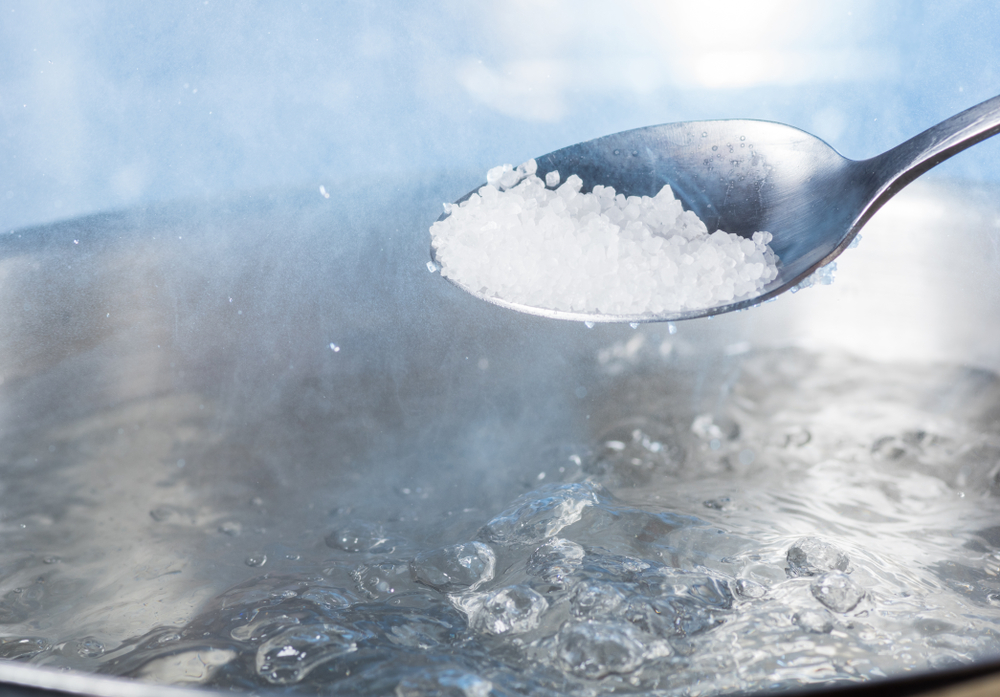Last Updated on June 11, 2024 by admin_hunter
When in a jam where hydration is important, you may ask yourself can you boil salt water to drink. Boiling seawater does remove some impurities, but boiling will not remove the high concentration of salt that is in ocean water.
To make seawater safe to drink, it must undergo a much more rigorous scientific process that includes desalination. This will not only decontaminate it, but also pull out the salts and other toxins, leaving you with a potent source of clean drinking water.
Desalination
With populations growing, water shortages are a problem in many parts of the world. Some people are turning to desalination, a process of removing salt from seawater or brackish water.
But desalination plants are costly and generate a waste called brine that can harm the environment. Brine waste is made up of concentrated salt and chemical residues, and is usually injected underground or spread on land. It also may contain heavy metals from equipment corrosion or cleaning chemicals.
The brine may also have other harmful chemicals in it, including chlorines that are lethal to certain organisms. Some of these chemicals are neutralized before discharge, but they can still make their way into the environment if the brine is not treated or diluted well enough before release.
Because of this, some researchers are advocating for a more careful approach to establishing de-sal plants. These include implementing conservation programs, encouraging potable re-use or treating storm water runoff to help prevent the need for expensive de-sal plants.
Some countries are already using seawater to produce drinking water, such as Saudi Arabia and Israel. But there are concerns that the energy used to desalinate seawater will contribute to climate change, and it’s difficult to predict the future of the technology.
Other factors may also limit how much of a supply of freshwater can be obtained from seawater. For example, the Gulf of Mexico is more saline than other parts of the ocean and is becoming increasingly difficult to desalinate. This is due to increased pollution from upstream dams, diverted freshwater to agriculture and oil and gas production in the area.
In other places, such as Australia and California, where people are unable to tap into aquifers for drinking water, the need for desalination is greater. In such cases, a more sustainable approach would be to use available wind and solar energy to desalinate the seawater.
Until that happens, it’s important to understand how desalination works and to know what to look for when determining whether the water is clean enough to drink. It’s a complex process that requires a lot of energy, but it can be useful in many situations, including disasters and extreme weather events.
Boiling
Boiling is the most fundamental cooking method; it’s used to prepare all sorts of foods, from pasta and potatoes to eggs and vegetables. It can be done quickly or slowly, depending on the temperature of your water.
Generally, boiling requires that a liquid reaches a certain temperature — in most cases, this is about 212 degrees Fahrenheit (100 degrees Celsius). This is called the boiling point.
When water reaches this temperature, it starts to erupt and form steam, which is what we call boiling. This steam forms small bubbles on the surface of the liquid that are in turn enclosed by the vapor phase of the water. These bubbles expand as they get closer to the surface because there’s less pressure acting upon them.
Aside from forming steam, boiling also heats the liquid’s interior. This allows the food to cook quickly and evenly, and it also helps break down tougher meats and vegetables.
Another benefit of boiling is that it keeps the food’s flavor intact and makes them more palatable. In addition, it reduces the need for fats or oils in sauteing and frying, making it easy to create nutritious and tasty meals.
In most cases, boiling is a quick process, but it can take some time to cool down the liquid, which is why you should plan ahead and boil more than you need to cook with. Moreover, it’s important to remember that boiled water is not suitable for drinking if it contains radioactive materials, fuel, or toxic chemicals.
Similarly, it is not recommended to drink seawater since it contains too much salt for our bodies to handle and can dehydrate us. In fact, people who are stranded on desert islands or lost at sea can die from dehydration because they do not have the ability to remove excess salt from their bodies.
The best way to make seawater drinkable is to remove the salt from it using desalination, but if that isn’t possible, you can still boil it and use the resulting steam to purify the water. This can be a great solution for a situation like a wilderness survival challenge or when you’re in an area with a lack of clean water.
Distillation
It’s common to boil water to drink in your home, but you can also use a technique called distillation to make your water clearer. This method can be used to produce drinking water from saltwater, and can help prevent dehydration, especially in regions with limited access to freshwater.
Distillation can be done using different types of equipment, including distillation columns and zone heaters. It’s an effective and environmentally friendly way to convert saltwater into freshwater.
The process can also be used to distill other products, such as alcohol or herbs. It’s the best way to purify a liquid, as it removes all contaminants from the substance.
However, the process doesn’t work as well in a mixture of liquids. In this case, the boiling points of the components must be the same in order for distillation to take place. This is dependent on Dalton’s law and Raoult’s law, which state that a mixture of liquids cannot have multiple boiling points at a given pressure and composition.
Another form of distillation is vacuum distillation, which requires lower atmospheric pressure than normal to evaporate the liquid. This process is more energy efficient than simple distillation, and many large desalination plants utilize it.
A distillation column is designed to maximize the amount of pure liquid that can be produced, which helps to conserve energy. It also requires careful design to avoid the possibility of vapor bubbles forming at the bottom of the container and blocking the condensed liquid.
To minimize this risk, the distillation apparatus must be constructed so that it can be opened to allow pressure to equalize with that of the atmosphere. This is a necessary safety precaution because extreme variations in the internal pressure can cause the distillation container to break open.
This is why it’s important to filter the salt water before you distill it. This will prevent the sand, stones, and other solid particles from being able to get into the condensed liquid and make it unfit for drinking.
Once you’ve filtered out all of the solids, you can begin distilling your salt water. This can be done in a variety of ways, but the most effective is to pour the water into a shallow pan. The water will then start to evaporate, leaving the salt behind. Then, the water will condense and drip down into a separate container.
Filtration
Filtration is a physical, biological and chemical operation that separates the components of a suspension from each other. It involves using a filter medium that is porous and only fluid can pass through it. The fluid phase is called the filtrate, and the solid particles that can’t pass through the filter are deposited on the filter media as the filter cake.
The pores in the filter are small enough to allow only the smaller molecules of the solutes to pass through them. The bigger molecules are retained on the other side of the filter and called the permeate.
In filtration, the material being filtered can be a liquid or a gas. It can be a solvent or a supercritical fluid. The process can be applied to a wide variety of materials.
A common application of filtration is in removing dust from the air in an air conditioning system. In order to do this, the smallest particles of the dust need to be removed by a filtration device.
Filtration can also be used to remove salt from water for drinking purposes. Seawater has a high concentration of dissolved salts, so removing the ions is an important step in making it safe to drink.
The most effective method of removing ions from salt water is to use fluorine-based nanostructures. The pores in these structures are a few atoms thick, so the molecules have very little friction when passing through them.
This method is more efficient than traditional desalination processes, which have been used to produce saline water for decades. However, it is more energy intensive.
Researchers have developed a new way to filter salt from water using fluorine-based nanostructures. These fluorous channels use much less energy than conventional desalination technologies, and they operate quicker.
In their research, the scientists found that they could remove salt ions from ocean water by implanting them in a filtration membrane with nanoscopic fluorine rings. They then compared the presence of these chlorine ions on either side of the filter to determine its effectiveness.
The process was able to remove a significant amount of sodium from the ocean water, reducing its salinity to 33 parts per thousand. The researchers estimate that this level of filtration would be sufficient for most people to safely drink the water.

